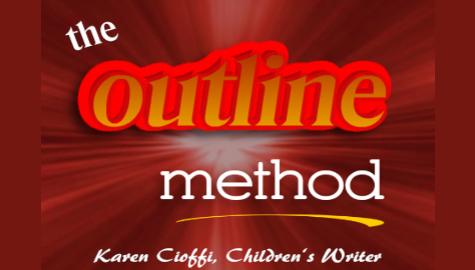
Are you an outliner or a pantser? I don’t know if there has been a study on how many writers prefer each, but I know there are many in both camps. You know the saying, “different strokes for different folks.”
But, before I go on, the definition of an outliner is a writer who creates a written (or typed) outline of the plot of their story. A pantser is a writer who creates the story as she goes along – no outline. The story unfolds as she is writing it.
If I had to take a guess, though, I’d say the majority of writers/authors are outliners (plotters).
The reason?
Creating an outline of a story before delving into it provides a foundation. It’s something to build upon. It’s like a map. You mark out your driving route. You know you’re going from Point A to Point B. You see the highways, roads, and so on between those two points. And, they’re all written out in your outline.
It’s interesting to know that there are different kinds of outliners. Some create full, detailed accounts of getting from Point A to Point B. Some simply have a rough outline of what the story will be about – possibly that John is at A and has to get to B.
Jeff Ayers (a top crime writer), in his article “Doing What He Loves,” in the May 2009 issue of the Writer, says:
Outlining allows me time to think. Does this ever happen to you–you’re in line at the market, some pushy person cuts in front of you, you mumble something ineffectual or stupid, then when you’re 10 blocks away the light bulb goes off, and you think “That’s what I shoulda said!” Well, outlining gives me the 10 blocks to think of something better.
This is an excellent explanation of why writers use the outline method of writing.
In the article, Ayers explains that he spends lots of time outlining. In addition to coming up with ideas, it allows him to get better acquainted with his characters. This more intimate knowledge will enable him to bring them to life.
As I mentioned earlier, outlining is like using a map. But, depending on how detailed you make your outline, it can be more like a GPS. It can lead you street by street from your starting point to your ending point.
Even if you run into an unexpected detour, as can happen when writing, you have a guided system in place to get you back on track. And, if it’s very, very detailed, you even know where the rest stops are, where to eat, where the scenic sites are, and so on. It doesn’t leave much to chance.
Knowing every step, every detour, all the characters… There is a comfort in this method.
I’m much more of a pantser, but I have used outlines now and then. They do offer a sense of security. But with that said, I love watching my story unravel before me. I love to watch characters develop and move forward; they almost write the story themselves. This comes with the pantser method.
It seems, though, that no matter which style you use, it’s not a guarantee of success or failure.
Gail Carson Levine has some good advice regarding this: “Quality comes from word choice, plot, characters – all the elements [of a good story].”
Which writing method do you use?
Reference:
Outlining vs. Pantsing
MORE ON WRITING FOR CHILDREN
The Book Summary – Five Must-Know Components
Finding Age Appropriate Words When Writing For Children
Editing a Children’s Book – 10 Tips Checklist for Authors
I’m a working children’s ghostwriter, rewriter, and coach. I can help turn your story into a book you’ll be proud to be the author of, one that’s publishable and marketable.
OTHER HELP I OFFER:
HOW TO WRITE A CHILDREN'S FICTION BOOK
A DIY book to help you write your own children’s book.
FICTION WRITING FOR CHILDREN eCOURSE
4-Weeks / 8 Sections Instructor Guided Self-Study Program
WRITERS ON THE MOVE SELF-PUBLISHING SERVICE
Self-publishing help for children’s authors
(Picture books and chapter books)
You can contact me at kcioffiventrice@gmail.com.


1 thought on “The Outlining Method of Writing (Are You an Outliner?)”